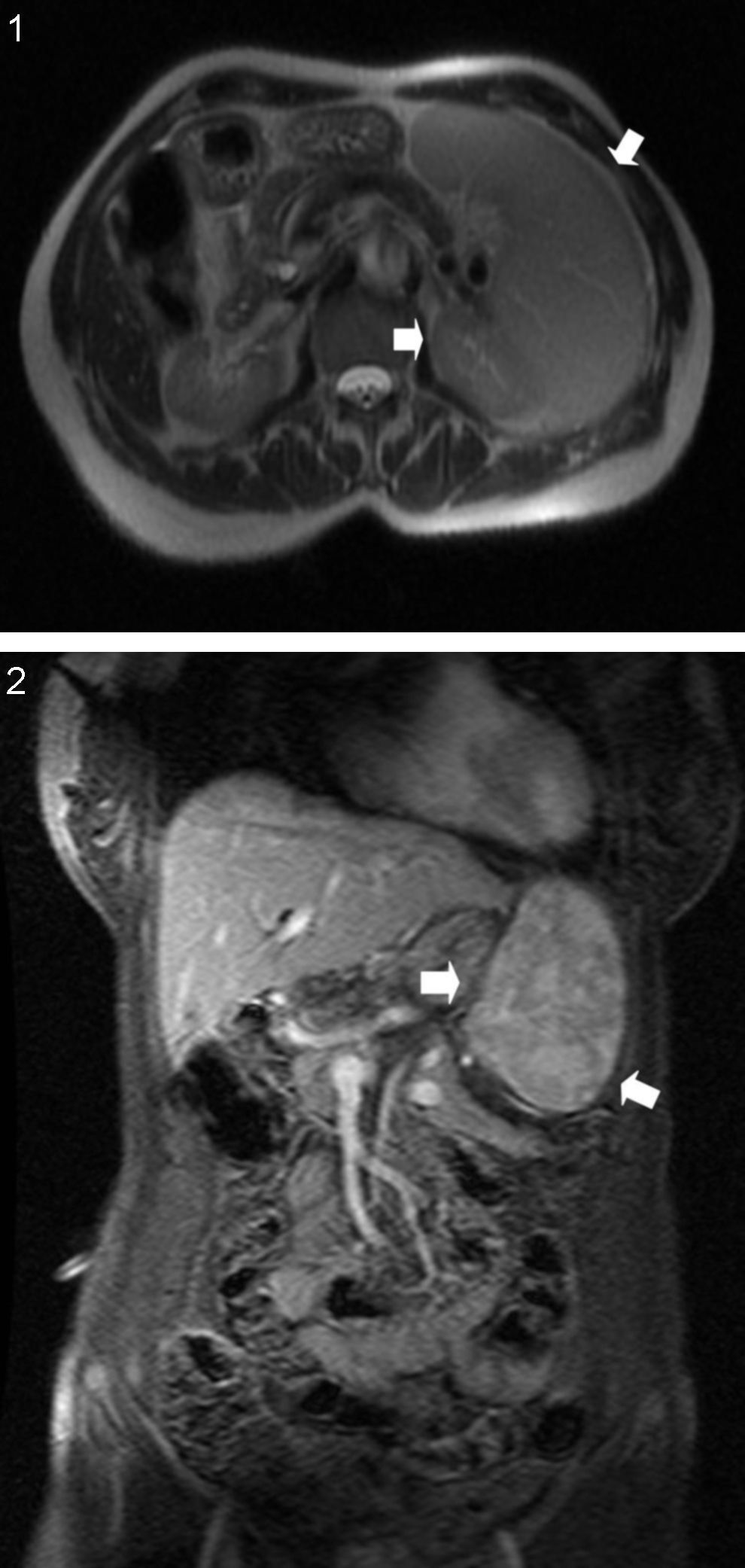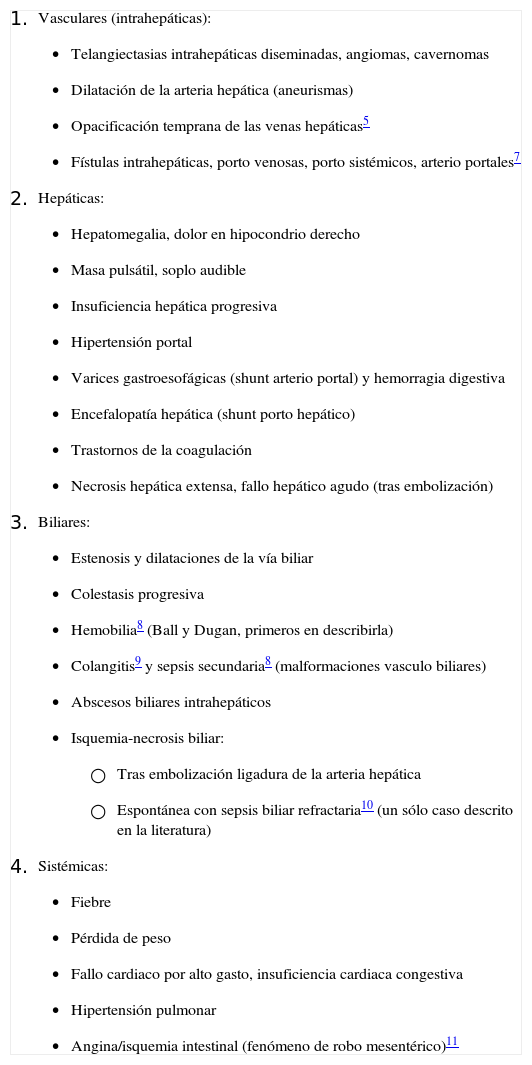La Enfermedad de Rendu-Osler es un desorden sistémico debido a una alteración del endotelio vascular. Su manifestación más frecuente es la epistaxis, pero las malformaciones vasculares afectan a multitud de órganos, como el hígado, donde el desarrollo de fístulas puede ocasionar un fallo cardiaco secundario debido a los grandes shunts que se generan entre las venas hepáticas y la arteria hepática. Para resolver la afectación cardiopulmonar tradicionalmente se planteaban tratamientos como la embolización o la ligadura de la arteria hepática, pero pueden ocasionar complicaciones tan graves como la necrosis o el fallo hepático.
Observación clínicaPresentamos el caso de una mujer de 48 años seguida en nuestro hospital desde 1987 y diagnosticada de Rendu-Osler con presencia de múltiples fístulas intrahepáticas entre venas y arteria hepática, que desarrollo a lo largo de los años un cuadro de insuficiencia cardiaca progresiva que limitaba su calidad de vida.
ResultadosTras varios ingresos por empeoramiento, su disnea llegó a hacerse de reposo y su gasto cardiaco aumentó considerablemente en los diferentes controles ecocardiográficos, llegando a valores de 10,6l/min. Esto, unido a la refractariedad de años de tratamiento médico, y a la vista de lo buenos resultados descritos en la literatura revisada, nos hizo plantearnos finalmente la realización de un trasplante hepático, que se llevó a cabo en diciembre de 2004. Tras el mismo se resolvió la situación hiperdinámica, quedando la paciente asintomática y sin datos de fallo cardiaco. Aunque en los últimos años el trasplante hepático se ha convertido en el mejor y definitivo tratamiento para estos pacientes.
ConclusiónÉste es el primero que se lleva a cabo en España. En la actualidad se dispone de diferentes terapias, pero las indicaciones del trasplante hepático son cada día mayores, sobre todo debido a los riesgos que entrañan las otras opciones terapéuticas. Si bien no se ha establecido cuál es el momento adecuado para llevarlo a cabo, las indicaciones más aceptadas son la insuficiencia cardiaca y la hipertensión portal que no responde a tratamiento médico.
Rendu-Osler’s disease (RO) is a rare systemic vascular disorder due to a fibrovascular dysplasia in the endothelium of vessels. Recurrent epistaxis is the main clinical manifestation, but arteriovenous malformations (AVMs) can involve many organs, including the liver. Hepatic involvement can develop refractory heart failure due to large shunts between the hepatic veins and the hepatic artery. Embolization and hepatic artery ligation have also demonstrated to reduce cardiac output in RO, but these therapeutic options have significant morbidity and complications such as necrosis or liver failure.
Case reportWe report the case of a 48 years old woman diagnosed in 1987 with RO and significant hepatic involvement, with multiple fistulas between veins and hepatic artery. In the following years she developed progressive heart failure that limited her quality of life.
ResultsShe was admitted on more times with heart failure and her dyspnea worsened progressively up to NYHA IV. At this time, an echocardiograph control showed an output cardiac about 10.6l/min. On December 2004, although the medical treatment, the worsening of the patient went on, so we finally decided to conduct a liver transplant that resolved the symptoms and the hyperdynamic circulation. Despite the fact that liver transplant has become without doubt into the best treatment for these patients in the last years.
ConclusionsThis is the first one done in Spain. There are different therapies available for these patients, but the indications for transplantation are greater each day, mainly due to the risks of the other options. Currently the stated guidelines are heart failure and portal hypertension refractory to medical treatment. So in these situations, liver transplantation should be proposed in the early stages of the disease and may be the only viable option.
Artículo
Comprando el artículo el PDF del mismo podrá ser descargado
Precio 19,34 €
Comprar ahora









